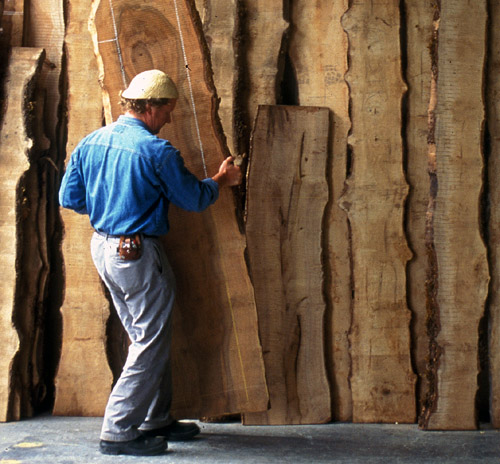 My projects always begin with sorting the pile, touching the wood
My projects always begin with sorting the pile, touching the wood
Like cooking, working with wood engages all of the senses in symphony. Touch plays a major role in the early stages of a project, especially at the scale of fitting out the interior of a new building, like the Guest House that now requires my full attention and has my workshop maxed out to capacity. The start of my New Year has me managing stacks of Deodar Cedar I’ve had custom milled and air-dried for the project, and my days have been resplendant with re-organizing and grading the raw material, which I last saw as logs about a year ago.
After delivery, I estimate I handle each piece of milled wood at least five and up to ten plus times prior to installation, and I learn a little about how best to use each stick every time it passes through my hands. In many ways, this is my favorite part of the process, the most automatic, as the material practically grades itself into distinct piles based upon my assessment of touch, which leads naturally to visual patterning. Handling each stick gives me an understanding of where it lived on the tree, its structural integrity, moisture and resin content, which all informs how the wood will age when used daily in a home. Over the years, I’ve trained my hands to be the advance guard on seeing the wood and its color and grain, and I’ve learned to trust my sense of touch over my sense of sight when grading wood.

Ultimately, the logic of grading wood by touch informs how one interacts with the finished piece. Simply put, horizontal surfaces are designed for durability and a depth of grain that gains character over time, like a familiar path; vertical surfaces are designed for daydreaming, like clouds.